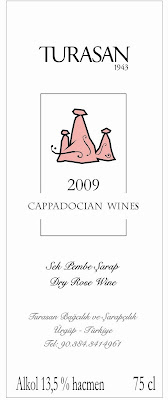One of the Turasan vineyards is located in Ürgüp, Cappadocia at 1,050 meters, so it’s one of the highest vineyards in the world.
This 40 acres parcel is named Zeynep, which is also the name of Hasan Turasan’s daughter. She was born in 2001, creation date of the vineyard.
Tomorrow is the beginning of May and the temperatures should warm up quickly. This will be good for the Chardonnay’s growth. At this time all the buds have broken and branches started to grow.
Chardonnay vine at 4 leaves stage
To avoid excessive competition with the vines, every second row has been lightly plowed. The other one is still grassy.
Thanks to a single pass with the rotovator the grass is slightly buried under a few inches of soil. It will be quickly converted into organic matter.
This practice is very beneficial, because it enriches the soil with organic matter, unpacks it and improves its structure. Water and air circulation is better and the soil life can develop itself more easily (fungi, bacteria, worms...).
We often hear that at least 80% of the quality of a wine comes from the quality of grapes. Well, we can say that 50% of the quality of grapes comes from the soil quality and its proper functioning. The soil must be alive to give good grapes!
For this reason among others, we do not use chemical weed killers in our vineyards. The qualitative result is there: the vines are beautiful; the wines are more and more fruity and balanced. As an extra, it's nice to have small flowers in our vineyard in spring...
Grassy inter-raw and biodiversity
Ladybig on a vine

















